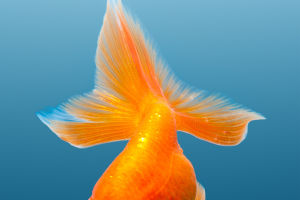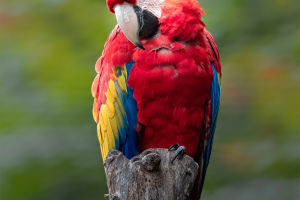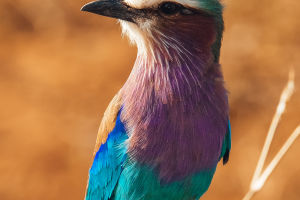Emperor penguins, also known as Aptenodytes forsteri, hold the title of being the largest, tallest, and heaviest penguins out of the 18 species within the penguin family. In fact, they are the heaviest seabirds in the world.
Adult emperor penguins can reach staggering weights of up to 46 kilograms and stand as tall as 115 centimeters. These majestic creatures truly reign as emperors among penguins.
One can easily identify emperor penguins by their distinctive black heads, tails, backs, and wings, which starkly contrast with their milky white underparts.
The white color gradually transitions to a soft yellow hue as it ascends from the bottom up, creating a remarkable spectacle.
It is worth noting that male emperor penguins are typically larger than their female counterparts.
Emperor penguins possess a remarkable ability unique to their species: they can reproduce during the winter on the Antarctic continent.
This incredible feat is made possible by their specialized body structure, which enables them to withstand extremely cold conditions.
The emperor penguin's large size plays a crucial role in this adaptation, as it allows for a greater ratio of body volume to surface area, effectively reducing heat loss.
Over the course of evolution, emperor penguins have undergone several adjustments in their body structure, metabolism, and behavior, making them well-suited to life in the Antarctic.
Interestingly, most emperor penguins rarely come into contact with solid ground throughout their lives, instead spending their existence either on ice or in the sea.
Emperor penguins inhabit the region between 78 degrees south latitude and 66 degrees south, seldom venturing beyond this area.
Despite the challenging conditions, their average lifespan can reach 20 years, with some individuals surpassing this mark.
However, among their offspring, only 20% survive to reach one year of age, resulting in a population consisting mostly of adult emperor penguins.
These remarkable birds inhabit the frigid surroundings of the Antarctic Circle year-round, enduring bitterly cold temperatures.
As mentioned earlier, emperor penguins spend the majority of their lives on sea ice or in chilling waters, so how do they manage to survive such harsh conditions?
First and foremost, emperor penguins possess thick and waterproof feathers that provide excellent insulation against heat loss in cold environments.
Their feathers are densely packed and can occasionally stand on end, creating an insulating layer of air between their bodies and the skin.
In addition to their feathers, emperor penguins boast a subcutaneous fat layer that can measure up to 3 centimeters in thickness.
This accumulation of fat occurs prior to the breeding season and surpasses that of their fellow penguin relatives.
However, the thickness of this fat layer makes it challenging for them to maneuver on the ice.
Emperor penguins are capable of maintaining a constant body temperature within a broad range of temperature variations.
They generate additional heat through physical exercise, shivering, and the breakdown of stored fat to cope with the cold environment.
During summer on the outskirts of the Antarctic continent, emperor penguins even extend their wings to dissipate heat, a testament to the efficiency of their body's thermoregulation mechanisms.
When faced with severe weather conditions during the breeding season, emperor penguins huddle together to conserve warmth and resist the piercing cold.
Forming a roughly circular arrangement, each penguin faces the center and moves towards it. This communal huddling ensures that their collective body heat is retained and not lost to the frigid air.
Consequently, emperor penguins have not only evolved physical adaptations to thrive in the cold Antarctic environment but have also developed the "huddling together for warmth" behavior as a means of combating the cold.
They have fully adapted to the extreme conditions of the Antarctic, making them a truly exceptional species in this region.
While most bird species opt to breed during spring or summer, especially in colder regions like the Antarctic or the Arctic, emperor penguins deviate from this trend.
They choose to breed during the harsh winter months, and there are several reasons behind this decision.
Firstly, emperor penguins are notably large, and if their chicks were born in spring, they would not have sufficient time to reach adult size and weight before the short summer concludes.
By advancing their breeding period, emperor penguins ensure their offspring possess the strength necessary to survive the upcoming winter.
Secondly, emperor penguins require expansive areas of ice for breeding. They exclusively nest on ice, and only during the Antarctic winter are there ample ice formations capable of accommodating tens of thousands of emperor penguins.
The breeding sites of emperor penguins are typically located 20 to 120 kilometers away from their habitual habitats, and the journey from their feeding grounds to the breeding grounds is fraught with dangers.
Lastly, selecting the cold winter for breeding offers a significant advantage. At this time, predators retreat, as the natural enemies of emperor penguins cannot endure the severe cold of the Antarctic winter.
Consequently, the breeding process of emperor penguins becomes safer during this period.
In conclusion, emperor penguins stand as the largest, tallest, and heaviest penguins in the world.
Their distinctive appearance, specialized adaptations to the cold, and unique breeding habits in the Antarctic make them a captivating and extraordinary species.
These remarkable birds have truly earned their place as the emperors of the penguin family.


